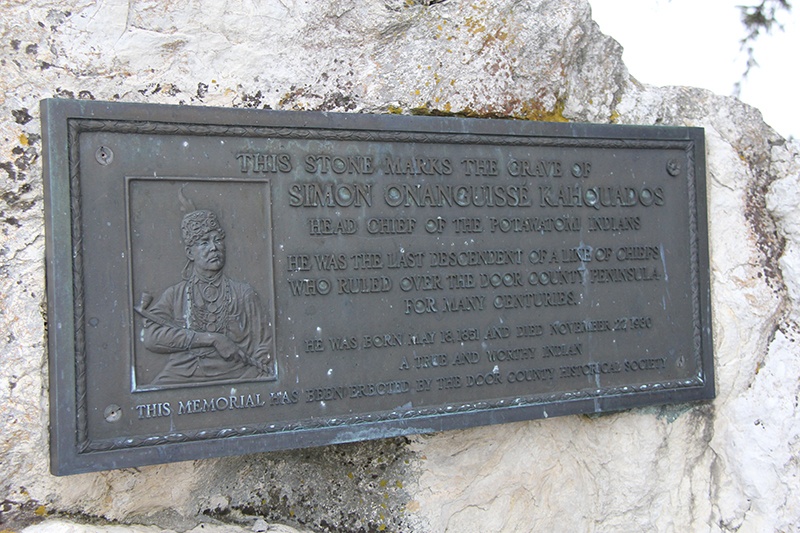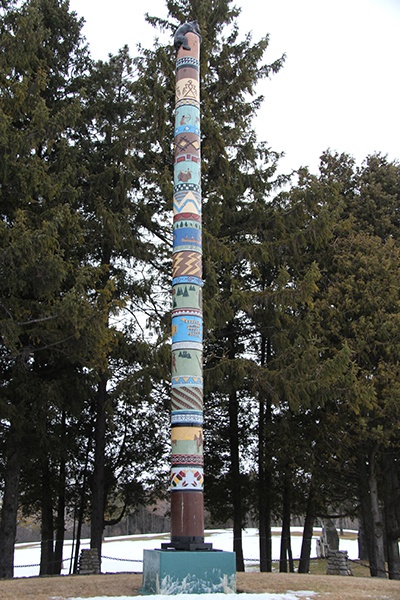
Native Americans in Door County
Published
European settlers were not the first people to call Door County home—not by a long shot. Well before Europeans had an inkling of the peninsula’s existence, Native Americans inhabited the Door peninsula and nearby islands and lived off its abundant natural resources.
One way visitors can pay tribute to those who came before us and on whose land we live, work, and recreate is to learn a little about who they were, how they lived, and where to go to reflect on the Native American experience.
Nations & Leaders of the Region
The Potawatomi were the best-known nation with the largest numbers in the area, and other groups that settled or passed through for significant periods of time included the Menominee, the Winnebago (or Ho-Chunk), the Ojibwe, the Sauk, the Petun, the Huron, and the Ottawa, among others.

The most famous and influential Native Americans from this region are Chief Simon Onanquisse Kahquados, leader of the Potawatomi Nation, and Chief Roy Oshkosh, leader of the Menominee Nation. Both are remembered as leaders and heroes who fought for justice for their people and sought to preserve their heritage.
Timeline: Native Americans in Door County
- 12,000 years ago: The earliest nomadic inhabitants, the Paleo-Indians, began arriving in what is now the Door peninsula and its islands. These groups would have moved around in search of natural resources to meet their immediate survival needs, such as forests for hunting, lakes for fishing, stone for tool-making, and wood and natural items for constructing shelters.
- 2,000 years ago: The earliest permanent indigenous settlers began establishing communities and basic infrastructure. Their lifestyle switched from a nomadic, hunter-gatherer one to a more permanent and agrarian way of life where they could construct sturdier homes, make pottery and tools, and cultivate plants and other renewable sources of food to feed the community on an ongoing basis.
- 500 years ago: In the 1600s, French explorers began discovering the region for themselves and establishing trade routes and temporary settlements. Their presence represented a shift from the Door region as home to various indigenous groups living in harmony with the land to it becoming a commercial hub for white settlers.
- 125 years ago: The Potawatomi people and other nations were forced out of Door County and neighboring counties by the federal government due to the 1830 Indian Removal Act. This forcible relocation represents a dark and deeply unjust time in our local and national history. Chief Simon Onanquisse Kahquados would later devote his life to fighting this practice and getting the land returned to his people.
- 115 years ago: After many years of lobbying, Chief Kahquados manages to convince the government to compensate the Potawatomi people for the land that was stolen from them. Although his efforts never paid off in the form of getting the land back or other major retribution, Kahquados and others received small payments from the government each month.
- Present day: The 2020 census suggests that of approximately 30,000 Door County residents, fewer than 150 have strictly Native American heritage, although a few hundred more list it as part of their racial makeup. Museums, businesses, and historic sites are the best places to learn about, and from, the Native American presence in the region.

Legacy & Influence
Today, there are a few spots around Door County where you can learn about the Native American influence, view historical artifacts and relics, and reflect on the injustices they endured.
Historical sites include the replica Native American settlement (in Whitefish Dunes State Park), the Cardy Paleo-Indian Campsite (in Sturgeon Bay), Chief Kahquados’ totem pole and historical marker (in Peninsula State Park), the Door County Historical Museum (in downtown Sturgeon Bay), and the site of Chief Oshkosh’s Trading Post (in Egg Harbor), which is now a shop selling authentic Native American jewelry, books, art, and more.
Sign up today!
Visit Door County virtually with monthly newsletter updates. Each issue is jam-packed with vacation ideas, special offers, recipes, festivals, events, and more.


